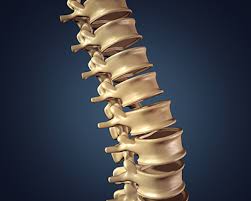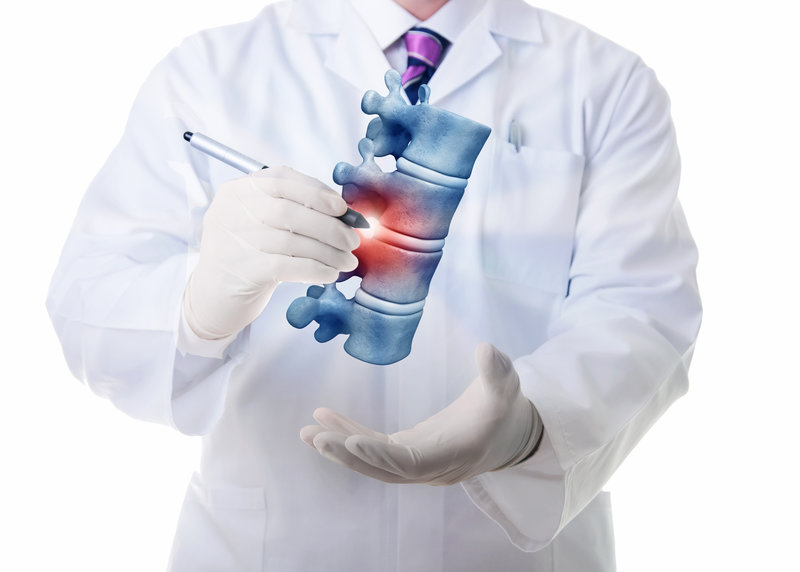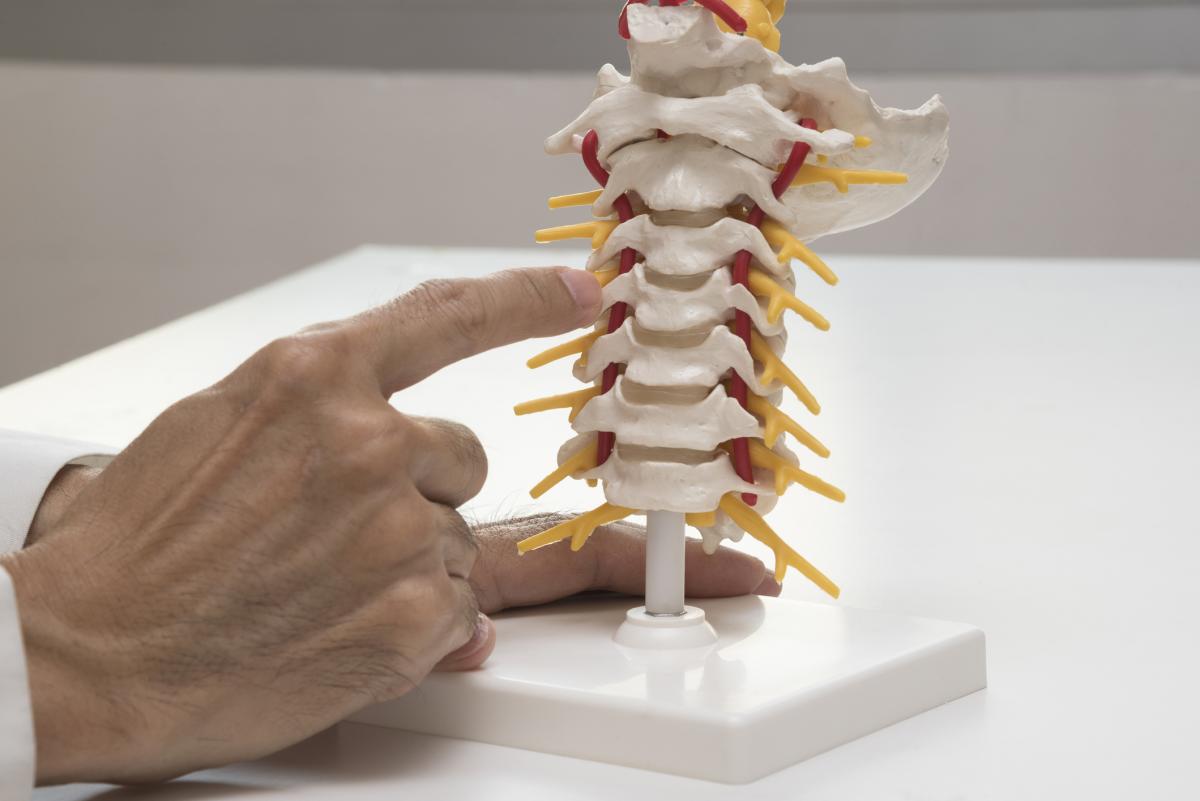What are the different types of disc problems?
Do you know that our spine has 23 cushions, similar to the spinal disc?

- What are the different types of disc problems?
- Types of disc problems:
- Bulging disc or slipped disc
- Herniated disc or gel is out or pinched nerve
- Degenerative disc
- Discitis
- What to look for? (Signs and symptoms)
- How to fix it?
- Short term relief:
- Long term relief:
- Here are five exercises for disc problems to get better and remain better:-
- 1. Crunches or Core curl ups – For strengthening the abdominal muscles:
- 2. Bridging- For strengthening of Glutes muscles or buttocks as they form the base of the spine:
- 3. Piriformis muscle stretch:
- 4. Extension in lying to reduce the pressure on the disc:
- 5. Alternate arm and leg raise for the stability of spine:
- How to prevent it?
- Here are five exercises for disc problems to get better and remain better:-
Six are in the neck (cervical region), twelve in the mid back (thoracic region), and five in the lower back (lumbar region).
They sustain us by acting as our body’s shock absorber, transmitting weight, preventing friction between two vertebrae during any movement, and allowing us to jump, bend, turn, and twist.

These spinal discs, also known as intervertebral discs, are a jelly-like cartilaginous substance found between two spine bones or vertebrae. The anulus (derived from the Latin word “anus” meaning “ring”) surrounds the nucleus pulposus (meaning “pulpy interior”), which is made up of a thick outer ring of fibrous cartilage called the anulus (derived from the Latin word “anus” meaning “ring”). As its roof and floor, the nucleus pulposus is jammed by cartilage endplates on both sides. Lets know More about different types of disc problems.

They make up one third to one quarter of the entire height of the spine and are found in the neck, mid back, and lower back. Lets know More about different types of disc problems.
Types of disc problems:

Because the intervertebral discs are such an important structure, any malfunction with them might cause the spine’s normal function to be disrupted.
There are several sorts of disc issues that can cause pain in the neck, mid, or lower back, as well as pain radiating down the arms or leg (sciatica). Lets know More about different types of disc problems.
These disc issues might be degenerative, chemical in nature (infection), or mechanical in form (which improves with spine rehabilitation). The following are the different forms of disc problems: –
- Disc bulge or slipped disc
- Herniated disc
- Degenerative disc or degenerative disc disease
- Thinning
- Discitis
Bulging disc or slipped disc
Disc bulge, also known as slipping disc, is a condition in which the disc bulges due to increasing strain on the disc. Because the symptoms of disc budge and herniated disc coincide, disc budge is sometimes misdiagnosed as a herniated disc. Treatment for slip discs varies depending on the level and extent of pressure on the disc, with exercise for disc disorders being the most reliable.

Herniated disc or gel is out or pinched nerve
When the nucleus pulposus’ gel-like substance is pushed out of the encircling anulus fibrosus, it may put pressure on a nearby nerve, causing a spinal disc herniation. It may produce sciatica symptoms if it presses against the roots of the sciatic nerve. Lets know More about different types of disc problems.
Depending on where your bulging disc is placed, you may have symptoms in different places of your body. If your bulging disc is in the lumbar area, you may experience comparable symptoms in your lower back, legs, buttocks, and feet. If your cervical area is affected, these symptoms may manifest in your neck, arms, or hands. In certain cases, you might even see them in your thoughts.
Degenerative disc
Around a quarter of the world’s population under the age of 40 has symptoms of disc degeneration at one or more levels, resulting in spinal disc issues. More than 60% of persons over the age of 65 show evidence of disc degeneration at one or more levels on magnetic resonance imaging, according to an imaging analysis.
As the nucleus pulposus, or inner gel, of the disc dries out with age, the disc’s shock-absorbing capacity decreases. This overall disc shrinkage adds to the natural reduction in height that occurs as people age.
The annulus fibrosus, or outer layer of the disc, weakens with age and becomes more prone to ripping. Furthermore, the cartilage endplates weaken, crack, and the vertebrae’s subchondral bone begins to wean off. In a nutshell, ageing causes significant wear and tear in the disc.
A disc is thinning, the water content is decreasing, and there may or may not be pain or stiffness.
Disc thinning is frequently attributable to nothing more complicated than the natural ageing process. Over time, the gel-filled cores of intervertebral discs lose hydration, and the discs’ thick outer shells crack and become brittle.
Symptoms of thinning disc-related spinal injuries include pain, numbness, tingling, and weakness, which can lead to considerable mobility loss and a lower quality of life. Lets know More about different types of disc problems. Lets know More about different types of disc problems.
Discitis
Discitis or diskitis is an infection or inflammation of the spinal disc. The damaged disc swells, putting pressure on the surrounding structure, causing irritation and inflammation of the soft tissues, joints, and vertebrae. Pain, swelling, stiffness at rest, and a fever are common symptoms of this illness. Lets know More about different types of disc problems.
What to look for? (Signs and symptoms)
When one or more of your discs is destroyed, it can cause a range of problems in your life, including the symptoms listed below:
· Pain
· Tingling or an insect crawling sensation, and numbness if the affected disc pinches the nerve
· Frequent spasm
· Stiffness
· Disrupted sleeping
· Deteriorated Quality of life
· Mobility issues, or reduced flexibility
· Muscle weakness and inability to work
· Bend or tilted posture in acute cases.
· Agitation and stress
The most frequent symptom of a herniated disc is pain or discomfort around the injured disc. If a herniated disc presses against the spinal cord, it can cause muscle weakness, numbness, or tingling, increased leg reflexes, bladder or bowel function abnormalities, or even paralysis if not treated.
A thorough physical examination by a spine specialist, as well as imaging tests such as an MRI, confirm the diagnosis, and therapy is then organized appropriately. Lets know More about different types of disc problems.
Discitis or diskitis is an infection or inflammation of the spinal disc. The damaged disc swells, putting pressure on the surrounding structure, causing irritation and inflammation of the soft tissues, joints, and vertebrae. Pain, swelling, stiffness at rest, and a fever are common symptoms of this illness. Lets know More about different types of disc problems.
How to fix it?
The first line of defence against disc issues is conservative treatment.
Physical therapy, cold and heat therapy, nonsteroidal anti-inflammatory medications (NSAIDs), skeletal muscle relaxants, and epidural injections are all conservative treatment options for herniated and sliding discs.
When you are allowed to be active but must avoid physical activity and aggravating factors such as repetitive bending, lifting weights, and prolonged sitting on the sofa, bed, or recliners, relative rest is indicated as first aid.
If non-surgical treatment fails to resolve herniated disc symptoms after 6-8 weeks, microdiscectomy surgery is usually recommended. During this procedure, the herniated section of the disc is removed to relieve pressure on the nerve root and allow it to heal. Mild exercises are given by a spine expert physiotherapist in cooperation with your surgeon as part of your post-operative care.
However, the majority of spinal disc disorders can be addressed non-invasively and provide both short and long-term relief.
Discitis or diskitis is an infection or inflammation of the spinal disc. The damaged disc swells, putting pressure on the surrounding structure, causing irritation and inflammation of the soft tissues, joints, and vertebrae. Pain, swelling, stiffness at rest, and a fever are common symptoms of this illness. Lets know More about different types of disc problems.
Short term relief:
• Cold and hot packs
• Positioning for pain alleviation
• Prescription drugs such as analgesics and muscle relaxants
• Anti-irritants like ointments and sprays
• Relative rest refers to reducing provocative activities such strenuous physical activity, bending, lifting weights, and prolonged sitting. Lets know More about different types of disc problems.
Long term relief:
· Changing your way of life
· Workstation with an ergonomic design
· Working on the deep muscles that come into close contact with the afflicted disc and its surroundings. The most successful treatment is precise or targeted muscle training, which gives support to the spinal disc under pressure.
Here are five exercises for disc problems to get better and remain better:-
1. Crunches or Core curl ups – For strengthening the abdominal muscles:
· As seen in the illustration, lie down on your back and rest your foot flat on the floor, hip-width apart.
· You have the option of keeping your hand clasped behind your neck or pointing straight up to the ceiling.
· Curl yourself up and tuck your navel in little.
· While curling, exhale as you elevate your upper body and inhale as you relax and return to the floor.
2. Bridging- For strengthening of Glutes muscles or buttocks as they form the base of the spine:
· On your exercise mat, lie down on your back.
· Bend your knees and place your foot and hand on the floor flat.
· Tuck your navel in and pinch your buttocks by 20%.
· Raise the pelvis in the air.
· Stay in this position until a count of ten.
· Relax. Repeat
3. Piriformis muscle stretch:
· Lie down on your back, legs straight.
· Next, raise one leg diagonally in the opposite shoulder’s direction.
· Hold for 20-30 seconds.
· Relax and repeat on the opposite side to feel the stretch in your buttocks.
4. Extension in lying to reduce the pressure on the disc:
• Lie down on your stomach.
• Make a fist and place it slightly below your shoulders.
• Relaxed foot, hip-width apart
• Now press your hands together, carefully straighten your elbow, and lift your chest up.
• Sense the contraction in your lower back.
• Then, when you’re ready, return to the floor and relax.
5. Alternate arm and leg raise for the stability of spine:
• Lie down in a horse stance with your hands and knees on the floor.
• Raise one arm in the air while concurrently raising the opposing leg.
• Hold for a count of 5, controlling and feeling your spine’s stability against gravity.
• Do the same thing on the other side.
How to prevent it?
Like any other medical disease, prevention is preferable to cure. The combination of an ergonomic workstation and a workout plan that focuses on spine health has been shown to minimize the risk of spinal disc problems in people who live an active lifestyle. Such a programmer is devised by a spine rehabilitation specialist. Lets know More about different types of disc problems.
Who are Spine specialists and when to seek their advice?
A certified physiotherapist with significant training and an advanced degree in spine rehabilitation is known as a spine rehabilitation expert. Since the majority of spinal disc disorders can be managed without the use of medications or surgery, it is suggested that you see a spine expert for pain relief, complete recovery, and recurrence treatment. Even if surgery is recommended, it is always a good idea to get a second opinion.
Dr Vipin the managing director of KLM Group. He is a well-known gold-medalist Orthopedic Surgeon, strongly reputed for his trusted and focused attitude our rich knowledge and experience, be assured of quality healthcare and world-class medical services in Orthopaedic, Spine care, Ophthalmology, X-ray & Diagnostics services along with physiotherapy services. Lets know More about different types of disc problems.
Read More :
| Exercises for Neck Pain |
| ORTHOPEDIC CARE DURING COVID 2021. |
| INNOVATIONS IN SHOULDER TREATMENTS – ROTATOR CUFF REPAIR |
| Neck Pain Causes |
| Neck Pain Symptoms |
Book Your Consultation
Website: www. klmgroup.org
Link: https://tinyurl.com/yyzvwmck
Email: info@klmgrou p.org
Ph: 0751-4000721,Mob: 7804826825
Address: 12, Saraswati Nagar, University Road, Near Silver Estate, Thatipur,
